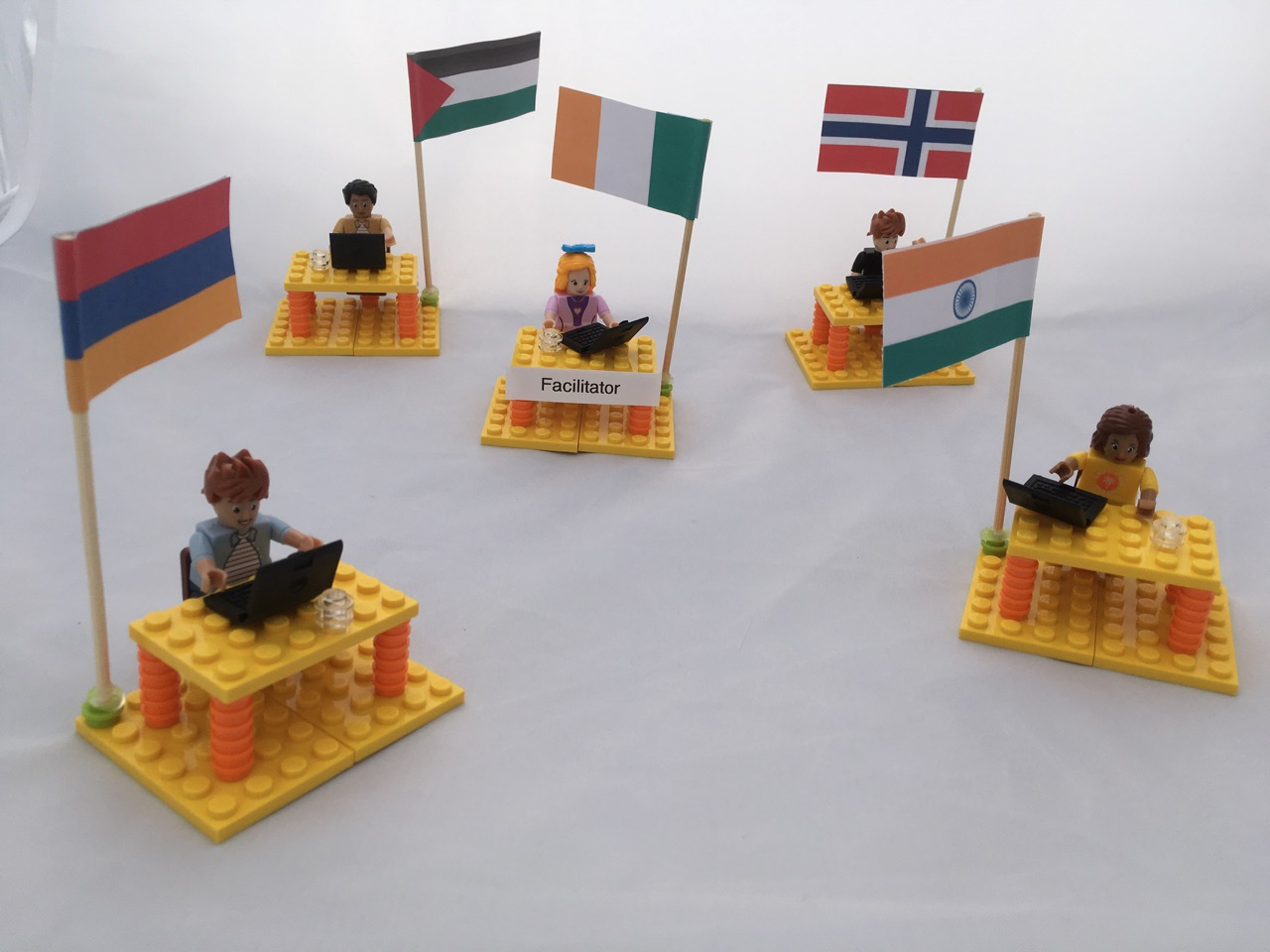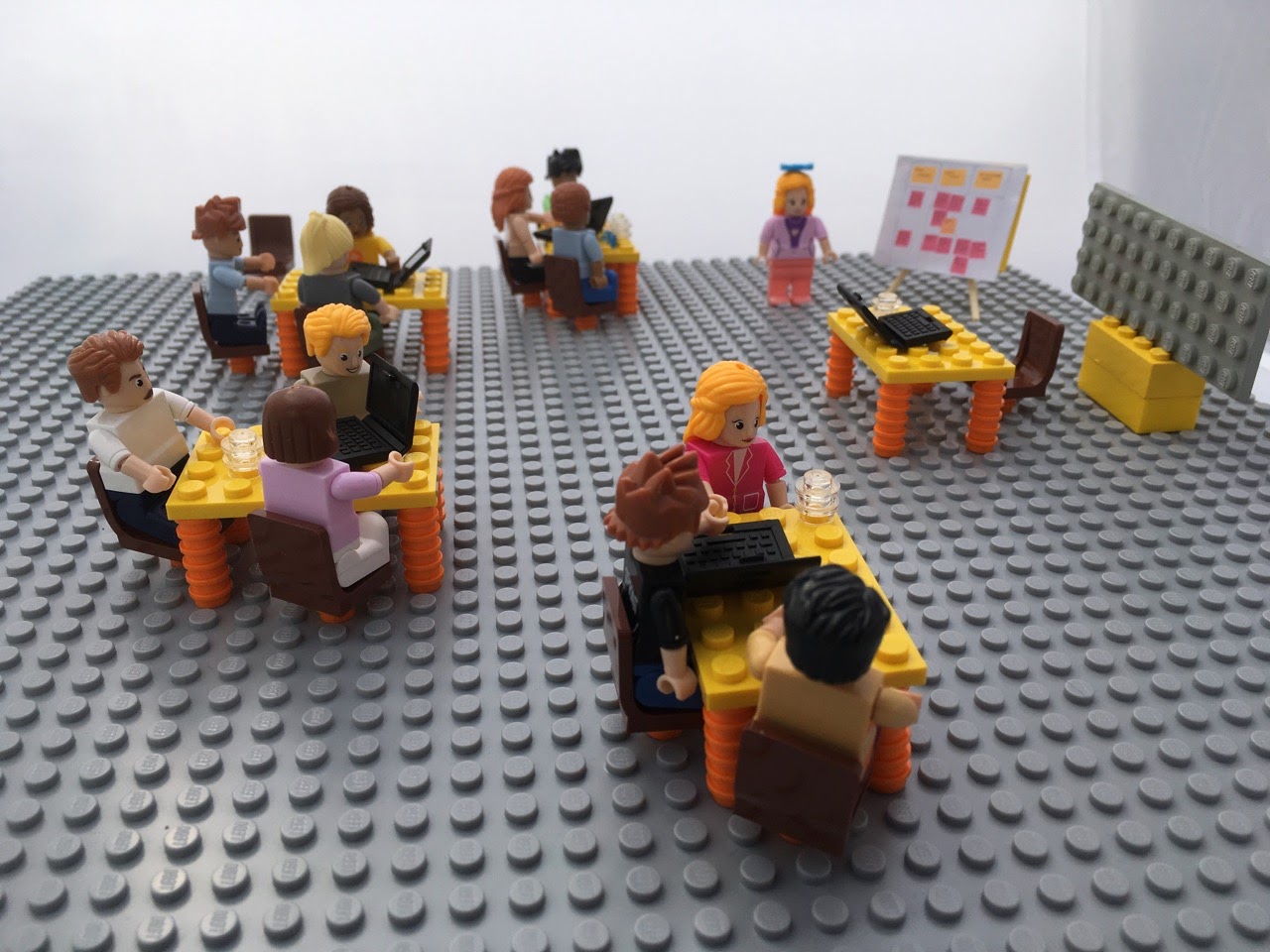“This post shares some thoughts developed over the past decade. My musings are neither fresh, nor reactive: I’ve been mulling over these issues for a long time while delivering virtual events and training other virtual facilitators.
I’ve been passionate about the possibilities of virtual facilitation to enable people to have engaging, productive and meaningful conversations. Sometimes I felt I was bleating into the void. But now, with the astonishing and distressing developments of the past few months, which are going to lead us goodness knows where, the question is no longer ‘whether’ to work virtually, but ‘how’ to do it in a way which preserves our sanity, humanity, wellbeing and productivity.” Orla Cronin
Covid-19 has provided the imperative for researchers and organisations to move rapidly to online working. Many of us have experienced how poorly delivered virtual meetings, or those fraught with technical issues, can quickly feel alienating and tiring, and ultimately turn people off. This post offers three key areas of consideration to support researchers who want to run virtual events well.
This is not a technical blog but instead offers insights that are relevant regardless of what platform you choose to use. There are many guides out there already regarding how to execute the technical aspects of a virtual event, including Orla’s recent blog post. The kind of events we are envisaging in this post involve between 15-100 people, for at least a couple of hours, and possibly a number of sessions, over one day or several.

[email protected]
1. Realistic planning
In today’s ‘lockdown’ circumstances, with most children at home at the time of writing, real humanity may mean limiting any workshop to half a day, and perhaps running these over several days.
Do also be realistic about how much time people can spend in front of a screen during one session, or over the course of a day. Design for a 10 minute break for every 50-60 minutes, and limit meeting time to no more than 6 hours in one day.
Detailed planning, including writing a script for your virtual meeting, helps keep the objectives set within the time available realistic. Scripting your event also provides an opportunity to foreground the quality of the experience for the meeting participants, alongside the shared task at hand.
Creating your script also makes it easier to work with a producer, who can help the event flow smoothly while you focus on facilitating great conversations.
2. Built-in sociability
It is particularly important to build in opportunities for more intimate connection during bigger meetings. As well as building a sense of relationality, real connection tends to help people relax, ground and engage more fully with meeting content. Avoid long plenaries and build in time for small group sharing and discussion - breakout rooms are great for this. Most reputable meeting platforms allow for breakout rooms, including the current market leader, but it is something to check before purchasing.

[email protected]
Take care to build some informality into your design: moments of playfulness and lightheartedness to replace the spontaneous and enjoyable interactions that would usually happen during breaks and mealtimes. A meeting recently convened by Orla and colleagues included a few minutes of casual communal colouring whilst waiting for people to reconvene after a break. A silly physical energiser made everyone laugh. Laughter of course is a key way to retain our humanity and connect, especially right now!
Running a non-live or ‘asynchronous’ space for messaging alongside synchronous live sessions provides valuable opportunities for participants to communicate before, during and afterward. This space can act as a foyer, with a ‘campfire’ where people can post photos, music links, and snippets from their lives. It also facilitates substantial formal discussions that may need to be conducted outside of synchronous sessions. This can prove particularly useful when participants are working across different time zones.
3. Inclusivity
Virtual meetings offer exciting new possibilities as well as challenges in terms of diversity and inclusion. In some cases virtual working may suddenly allow greater connectivity with participants who may normally be unable to travel to meetings. Co-creating an atmosphere that welcomes diversity of opinion, and participation from all attendees, is as important as ever in this context.
Ask if any participants need an orientation and offer optional orientation sessions as needed. Invite participants to make you aware of any particular needs. Send out a participant guide, as well as the meeting agenda, in advance. Within this you could suggest people prepare for varied modes of interaction as well as effectively using the platform’s features. Invite participants to add the pronoun they wish to use alongside their name in their platform profile, and encourage people to be mindful of the needs of those meeting remotely for the first time. Consider translation and interpreting for participants who are not strong in the main meeting language: many interpreters (including sign language interpreters) are willing to work online, and closed captioning and ‘booths’ can be implemented relatively easily.
Diversify your meeting format to ensure that quieter and less confident voices are included, for example by planning structured small group time or solo reflection time into meeting design. Following Step 1 by being realistic about what’s achievable within the time available may help avoid a scenario that privileges the most vocal and confident in order to get the job done.
We would love to hear examples of how you have built engagement and inclusion into your own virtual work. Keep in touch!
Author Bios: Órla Cronin is a research psychologist, a trainer and a facilitator. Órla’s transition from face-to-face to virtual facilitation began in 2006. A passion for the possibilities of virtual facilitation, plus a commitment to reducing her carbon footprint over the past decade led Órla to specialise in virtual training and facilitation, and she also trains other facilitators. Charlotte Dean is a writer, intuitive coach and devotee of authentic communication. She is Lead Associate for Evaluation with A5cend Ltd, UK.